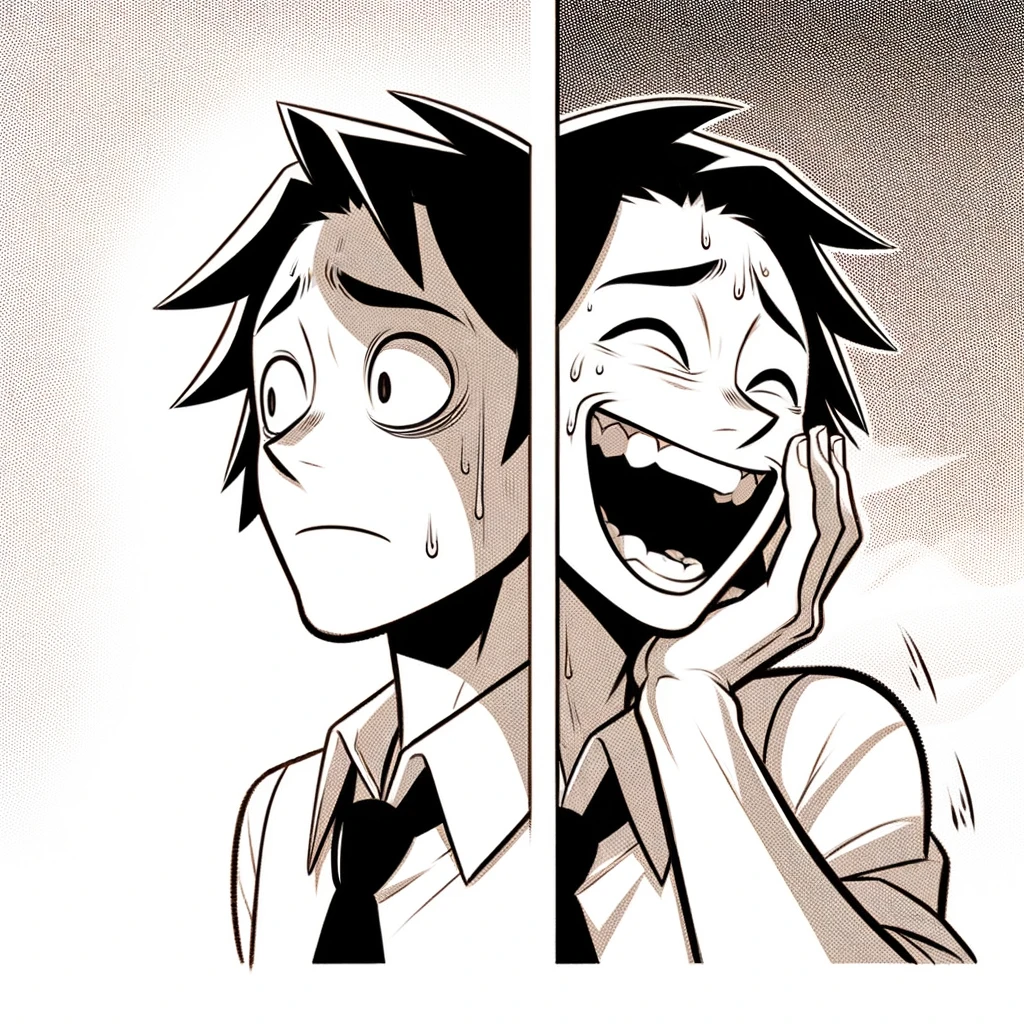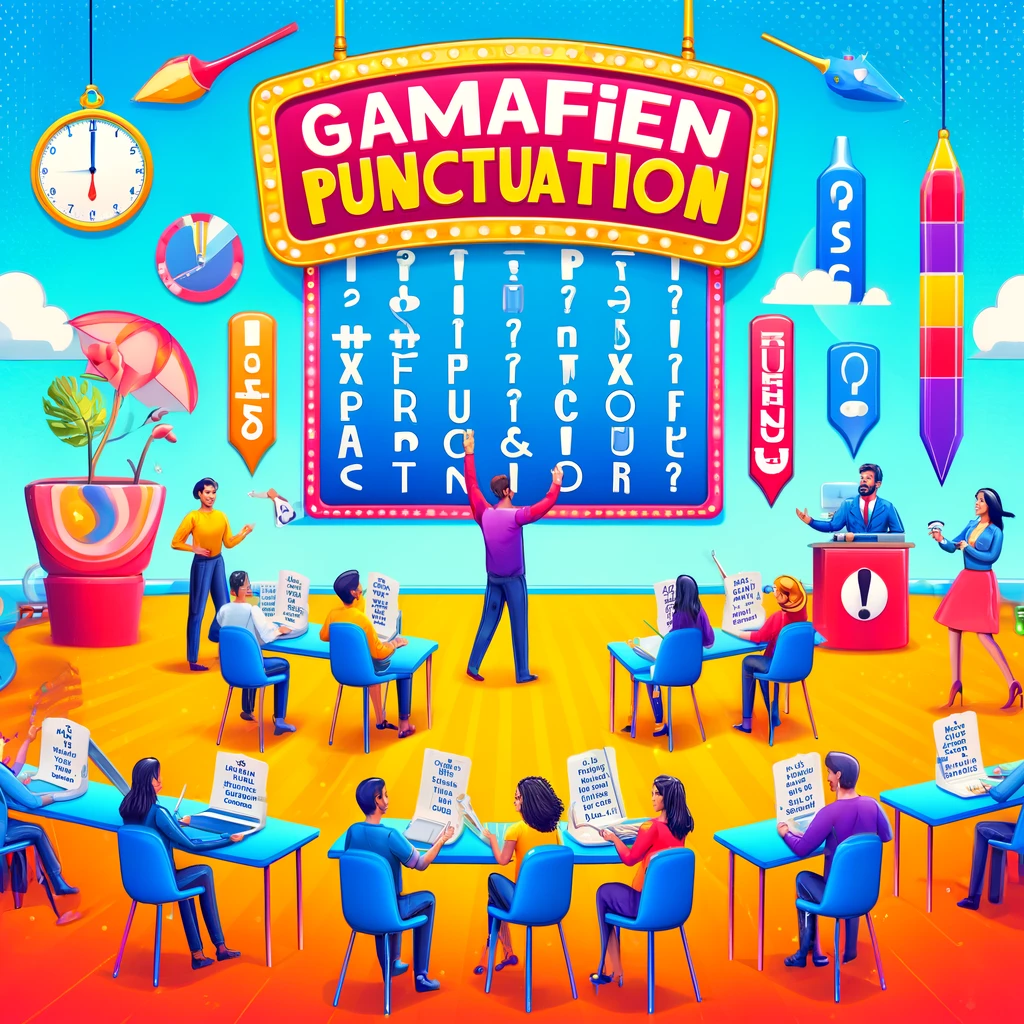BASIC PUNCTUATION REVIEW

Periods and Commas
In this lesson you will:
- understand the roles of periods and commas in writing.
- recognize the impact of punctuation on clarity and meaning.

Periods
-Periods in Declarative Sentences
A declarative sentence is a statement that conveys information or expresses an idea. It is the most common type of sentence and simply states a fact or argument without requiring any direct response. The period marks the end of these sentences, signaling to the reader that the statement is complete and providing a clear stop. For example:
- “The sky is blue.”
- “She enjoys reading novels.”
The use of a period in declarative sentences is crucial for separating thoughts and ideas, making the text easier to understand. Without periods to demarcate sentences, written language would become a continuous stream of words, leading to confusion and misinterpretation.
–Periods in Abbreviations
Abbreviations are shortened forms of words or phrases used to save space or avoid repetition. Periods are often used in abbreviations to indicate that part of the word or phrase has been omitted. Examples include:
- “Dr.” for Doctor
- “e.g.” for exempli gratia (Latin for “for example”)
- “Mr.” for Mister
- “U.S.” for United States
In some cases, especially with acronyms, periods are omitted (e.g., “NASA” for National Aeronautics and Space Administration). The trend in English is moving towards less use of periods in abbreviations and acronyms, but many traditional abbreviations still include them.
-Periods in Bullet Points
When using bullet points to list items, periods are not always necessary, especially if the items are not complete sentences. However, if the bullet points are structured as full sentences, each should end with a period. This helps maintain consistency and clarity within the list. For instance:
- Without full sentences:
- apples
- bananas
- oranges
With full sentences:
- Apples are rich in fiber.
- Bananas provide a good source of potassium.
- Oranges are high in vitamin C.

Commas
Commas are versatile punctuation marks used to clarify meaning by indicating pauses or separation within sentences. Their correct usage is crucial for maintaining the clarity and flow of written text. Let’s explore in detail how commas function in different contexts: separating items in a list, following introductory phrases, between clauses, and to set off non-essential information.
-Separating Items in a List
Commas are used to separate items in a series or list to prevent confusion and ensure that each item is distinctly recognized. This usage is perhaps the most familiar and helps readers understand that items are discrete entities within a sequence. For example:
- “I need to buy eggs, milk, bread, and cheese.”
The comma that comes before the conjunction “and” (known as the Oxford comma) is optional but can be crucial for clarity in some lists.
-After Introductory Phrases
An introductory phrase sets the stage for the main part of the sentence and is usually followed by a comma to signal the transition from the introduction to the main clause. This helps readers identify the beginning of the principal action or statement. For instance:
- “After the storm passed, we went outside to assess the damage.”
-Between Clauses
Commas are also used to separate independent clauses (complete thoughts) when they are joined by conjunctions such as and, but, for, or, nor, so, yet. This usage clarifies that each clause could stand alone as a sentence but has been connected to another clause for coherence or stylistic reasons. For example:
- “She wanted to go for a walk, but it started to rain.”
-To Set Off Non-Essential Information
Commas are used to enclose clauses, phrases, or words that add extra information to a sentence but could be removed without changing the fundamental meaning of the sentence. This non-essential (or non-restrictive) information is often an appositive, a parenthetical element, or an aside. For example:
- “My brother, who lives in Seattle, is visiting us next week.”
In this sentence, “who lives in Seattle” provides additional information about the brother but is not necessary to understand that the speaker’s brother is visiting.
Another example is the use of commas in direct address:
- “Lisa, could you please close the window?”
The name “Lisa” is set off by commas to indicate who is being spoken to directly.

Examples

- PERIOD USAGE
- Declarative sentence: “The sun sets in the west.”
- Abbreviation: “Dr. Smith is on vacation.”
- COMMA USAGE
- List separation: “We bought apples, oranges, bananas, and grapes.”
- Introductory phrase: “After the movie, we went to dinner.”
- Clauses separation: “If you study hard, you will pass the exam.”
It is very important to use correct punctuation, your life could depend on it:
- “Let’s eat Grandma!” vs. “Let’s eat, Grandma!”
- “I love cooking, my family, and my pets.” vs. “I love cooking my family and my pets.”

Learning Activities
Punctuation Correction Race
You will be provided with paragraphs with missing or incorrect use of periods and commas. You will be divided into teams. The first team to correctly punctuate the paragraph wins “Krugs”.
Instructions:
- Introduction:
- The class will be divided into teams of 3-4 students. Each team needs a workspace with a piece of paper and marker. Each team will be given a paragraph with punctuation errors and your task is to correct these as quickly and accurately as possible.
- The Race:
- On the teacher’s signal, teams start the correction process. A time limit will be set to add urgency.
- Work with your classmates to identify and correct errors, discussing among yourselves the best way to punctuate each sentence.
- When you finish, raise your hand or signal to the teacher. The teacher will then stop the timer for that team and check their work for accuracy.
- The first team to correctly punctuate their paragraph and signal completion within the time limit wins the race.

Written Exercise
You will write a short story, focusing on the correct use of periods and commas.
Objectives:
- Punctuation Mastery: Enhance your mastery over the correct use of periods and commas in writing, focusing on clarity and readability.
- Creative Expression: Encourage your creative thinking and expression through the writing of short stories or descriptions.
- Attention to Detail: Develop your attention to detail in their writing, particularly regarding punctuation.
- Critical Analysis: Foster the ability to critically analyze and revise written work for punctuation accuracy.
Instructions:
- Introduction:
- We will begin by reviewing the key rules for using periods and commas. Common mistakes will be highlighted and explained as to how they can alter the meaning or clarity of sentences. This will be your punctuation checklist.
- You’ll have the choice to either pick a writing prompt from a provided list or create your own topic for your short story.
- Writing Phase:
- Draft your story. Always refer to the punctuation checklist that was done in the introduction.
- Remember to use periods to end declarative sentences, for abbreviations, and to separate items in a list with commas. Also, use commas after introductory phrases, between clauses, and to set off non-essential information.
- Peer Review:
- Swap your writing with a peer for review. Each student should check their peer’s work for punctuation accuracy, using the punctuation checklist as a guide.
- Provide constructive feedback, pointing out both strengths and areas for improvement in your peer’s punctuation use.
- Revision Phase:
- You will revise your story based on the feedback received. This step reinforces the learning and correction process.
- Sharing Session:
- Everyone will share their final pieces with the class. This will be done by reading aloud or displaying the written work.

Comma Use Debate
You will be presented with sentences that could change meaning with different comma placements. You will have to debate the sentence’s meaning with and without the comma, explaining your reasoning.
Objectives:
- Critical Thinking: Enhance your ability to analyze how punctuation, specifically commas, affects the meaning of sentences.
- Language Awareness: Develop your understanding of the nuanced role of commas in clarifying sentence structure and meaning.
- Effective Communication: Be encouraged to articulate your thoughts and reasoning in a debate format, promoting clear and persuasive communication.
- Collaborative Learning: Foster a collaborative learning environment where you listen to different perspectives and learn from your classmates.
Materials that will be provided:
- A list of sentences that change meaning with the addition or omission of commas.
- Printed copies of sentences for each group or projection of sentences one at a time.
Instructions:
- Preparation:
- The class will be divided into small groups or pairs, depending on class size. Each group will be assigned wit a sentence from a list. Each sentence should be capable of changing meaning with the rearrangement or addition/removal of commas.
- Introduction:
- The objectives and rules of the activity will be briefly explained. The importance of understanding the impact of comma placement on sentence meaning is important.
- Each group will present their interpretation of the sentence’s meaning with and without the comma, defending their interpretation based on grammar rules and context.
- Debate and Analysis:
- Each group prepares their arguments for both versions of their assigned sentence (5-10 minutes).
- Groups take turns presenting their interpretations to the class, arguing for the meaning and clarity brought or obscured by the comma placement.
- A rebuttal or response from another group or from the audience is expected, fostering a dynamic debate environment.

ADVANCED PUNCTUATION
Comma Usage

Comma usage is essential for clarity and rhythm in writing, guiding readers through sentences with ease. They delineate items in lists, clarify relationships between clauses in compound sentences, and separate coordinate adjectives, enhancing description without altering meaning. Commas also set off non-essential information, enriching sentences without interrupting the main message. Mastery of commas allows writers to craft sentences that are clear, precise, and engaging, demonstrating how these small punctuation marks can significantly impact the readability and effectiveness of writing.
Learning Objectives
- Master the various contexts in which commas are used.
- Explore the nuances of comma placement and its effect on sentence structure.
Content
Practical Examples
- Compound sentences: “I wanted to go for a walk, but it started to rain.”
- Non-essential information: “My brother, who is a doctor, lives in New York.”
- Adjective order: “The cold, rainy weather spoiled our picnic.”
Here you have a presentation that gives you more information about commas. Enjoy it!
Learning Activities
Comma Placement Workshop
Objectives:
- Enhance Punctuation Skills: Improve your ability to correctly use commas in various writing contexts.
- Promote Critical Thinking: Analyze sentence structure and punctuation requirements, fostering deeper grammatical understanding.
- Foster Collaboration: Develop teamwork skills as you work together in small groups to discuss and solve punctuation puzzles.
- Enhance Presentation Skills: Strengthen your confidence and ability to articulate grammatical reasoning in front of your peers.
Instructions:
- Introduction:
- We will briefly review the primary uses of commas, including before conjunctions in compound sentences, in lists, between coordinate adjectives, and to set off non-essential clauses and phrases.
- Group Formation:
- The class will be divided into small groups of 3-4 students each. You will receive sentences that lack commas but require them.
- Discussion and Analysis:
- Each group works together to insert commas in the provided sentences. You must discuss why each comma is necessary and how it affects the sentence’s clarity.
- Refer to specific grammatical rules or guidelines that justify their comma placements.
- Group Presentations:
- Each group presents their corrected sentences and explain their punctuation choices to the class.
- Each presentation should include a discussion on the importance of each comma’s placement and the potential changes in meaning if the comma were omitted.
- Class Discussion
Exercise Sentences:
- “Before we leave don’t forget to check that all doors are locked and the windows are closed.”
- “While I was eating the cat scratched at the door.”
- “My brothers who are on the football team usually practice on Sundays.”
- “The car that we rented for our trip broke down the car that we own would have been a better choice.”
- “She bought all the ingredients the recipe calls for sugar butter flour and eggs.”
- “We can go to the beach or we can visit the museum.”
- “It was a cold dark stormy night.”

Interactive Quiz on Kahoot
The teacher will provide you with a link to a Kahoot with the theme of comma usage

PUNCTUATION CREATION HISTORY
Objectives:
- Highlight the Importance of Punctuation: Demonstrate how punctuation impacts the meaning of sentences and the overall understanding of a text.
- Encourage Creativity and Critical Thinking: Stimulate your imagination to create stories that cleverly incorporate punctuation errors, leading to humorous or unexpected outcomes.
- Improve Grammar Skills: Enhance your ability to recognize and correct punctuation errors through creative practice and peer review.
- Promote Collaboration: Foster teamwork and communication skills as you work in groups to brainstorm and write your stories.
Instructions:
- Introduction:
- We will begin with a brief discussion on the importance of punctuation in writing. Highlighting how punctuation helps to clarify meaning and can dramatically change the interpretation of text.
- We will see some examples of sentences where punctuation changes the meaning, such as the classic “Let’s eat, Grandpa!” vs. “Let’s eat Grandpa!”
- Group Formation:
- The class will be divided into small groups of 3-4 students. Each group will work together to write a short story.
- Brainstorming Session:
- In your groups, you will brainstorm ideas for a short story. Think of scenarios that could lead to humorous or unexpected outcomes due to punctuation errors. For example, a character misunderstands a written invitation due to a missing comma.
- Each group outlines their story’s plot, keeping in mind how punctuation (or the lack thereof) will play a pivotal role in the narrative.
- Story Creation:
- Using their brainstormed ideas, each group writes a short story, intentionally incorporating punctuation errors that alter the story’s direction or meaning. Be creative, but remember that the story should still be understandable and the role of punctuation clear.
- Stories should aim to be between 200-500 words to allow for depth without being overly complex.
- Peer Review and Revision:
- Groups exchange their stories with another group for peer review. The reviewing group reads the story, identifies the punctuation errors, and discusses how these errors impact the story’s outcome.
- After the review, stories are returned to the original group for revisions based on feedback.
- Presentation and Discussion:
- Groups take turns presenting their original stories to the class, highlighting the intentional punctuation errors and explaining the resulting humorous or unexpected outcomes.
- After each presentation, we will reflect on the importance of punctuation and how the errors changed the story’s interpretation.
- Reflection

ADVANCED PUNCTUATION
Semicolons, Colon, Dashes, and Parentheses

Semicolons, Colon, Dashes, and Parentheses. These punctuation marks play distinct roles in English writing, enhancing clarity, readability, and sometimes the tone of sentences. Find out more in the resources provided in this lesson.
content
Semicolons (;)
Usage:
- Linking Independent Clauses: Semicolons are used to connect closely related independent clauses. This is particularly useful when the clauses are not joined by a conjunction and when the ideas are closely linked or contrasted.
- Complex Lists: When items in a list already contain commas, semicolons can be used to separate these complex items to avoid confusion.
Examples:
- Independent Clauses: “She loves books; he loves films.” This use of the semicolon shows a contrast without needing a conjunction.
- Complex Lists: “On our trip we visited Erie, Pennsylvania; Columbus, Ohio; and Nashville, Tennessee.” Here, the semicolon clarifies the separation of items that include commas.

Colons (:)
Usage:
- Introducing Lists: A colon can introduce a list when the clause before the colon is independent.
- Introducing Quotations: When introducing a quotation that is formally announced, a colon is used.
- Explanation or Emphasis: Colons can also introduce an explanation or draw attention to something that follows, particularly if the first clause is complete.
Examples:
- Lists: “You have three choices: run, hide, or fight.”
- Quotations: “He often said of himself: ‘I am a man of simple tastes.'”
- Explanation/Emphasis: “She was only afraid of one thing: spiders.

Dashes (—)
Usage:
- Additional Information: Dashes can insert additional information into a sentence. Their effect is to create a more dramatic add-on or interruption compared to commas.
- Range or Connection: Dashes are used to indicate ranges in dates and pages or connections between places.
- Emphasis: Unlike commas, which create a soft pause, dashes highlight the importance of the clause they bracket.
Examples:
- Additional Information: “All of her friends—even the ones who moved away—came to her graduation party.”
- Range or Connection: “The meeting will take place August 1—August 5.”
- Emphasis: “He gave her one thing she truly needed—a friend.”

Parentheses (())
Usage:
- Additional Information: Parentheses are used to include information that clarifies or is supplementary to the main point, similar to dashes, but typically less essential to the overall understanding of the sentence.
- Clarifications: They often enclose clarifications, minor details, or additional thoughts that are not crucial to the main text.
- References and Data: In academic and technical writing, parentheses are used to enclose references, statistical data, or acronyms.
Examples:
- Additional Information: “He finally answered (after what seemed like an eternity) and said he would join later.”
- Clarifications: “The CEO of the company (who was appointed just last year) has decided to step down.”
- References and Data: “The results (see Table 2) indicate a significant increase in efficiency.”

Discover more in the following presentation:
Learning activities
Punctuation Pairing
Objectives:
- Enhance Punctuation Skills: Improve your ability to correctly identify and apply various punctuation marks (semicolons, colons, dashes, and parentheses) in sentences.
- Promote Understanding: Deepen your understanding of the function and impact of different punctuation marks on sentence structure and meaning.
- Encourage Critical Thinking: Develop critical thinking skills as students analyze sentence structure to determine the most appropriate punctuation.
Instructions:
- Preparation:
- A set of sentence cards without punctuation and a set of punctuation cards (semicolons, colons, dashes, and parentheses) will be provided. There will be multiple options for punctuation for each sentence to create a challenge.
- Activity Setup:
- The class will be divided into small groups or pairs to foster collaboration.
- The sentence cards and punctuation cards will be distributed to each group.
- Matching Task:
- Read each sentence and discuss within your group which punctuation mark you believe fits best. You must consider the role and rules of each punctuation mark as you apply them.
- Once you decide, you will match the sentence card with the appropriate punctuation card.
- Group Discussion:
- After all sentences have been matched with punctuation marks, each group presents a few of their sentences and explains why they chose each specific punctuation mark.
- Feedback will be given and we will discuss alternative punctuations that could change the meaning or clarity of the sentence.
- Class Review:
- We will go over each sentence as a class and discuss the choices. How different punctuation marks can alter the meaning or emphasis in each sentence will be highlighted.

Gamified Punctuation Challenge
Objectives:
- Reinforce Punctuation Mastery: Deepen your understanding and application of advanced punctuation (semicolons, colons, dashes, and parentheses) through active and competitive engagement.
- Promote Team Collaboration: Encourage teamwork and cooperative problem-solving as you work together to identify and correct punctuation errors.
- Enhance Attention to Detail: Develop your attention to grammatical details and your ability to apply punctuation rules in varied contexts.
- Foster a Competitive Learning Environment: Use game elements to make learning punctuation more engaging and fun.
Instructions:
- Preparation:
- A list of sentences with missing or incorrect punctuation will be given. These sentences vary in complexity and include multiple types of punctuation errors to challenge you at different levels.
- Examples of sentences for the game:
- “We visited London England last summer it was an amazing trip.”
- “The conference has three key topics sustainability blockchain technology and e-commerce.”
- “If you’re coming to the party let me know what you will bring so I can plan accordingly; drinks snacks, or dessert.”
- “The author wrote in a foreword that this story is based on real events; however, some names and details have been altered.”
- Team Formation:
- The class will be divided into small teams, ideally 3-4 students per team, to encourage collaboration and ensure everyone participates.
- Game Setup:
- Teams will receive a series of sentences one at a time. Each sentence will either lack punctuation or have incorrect punctuation.
- Teams have a limited amount of time (e.g., 2 minutes per sentence) to discuss and write the correctly punctuated sentence.
- Challenge Rounds:
- We will start the challenge with simpler sentences and progressively increase the difficulty with each new sentence.
- Each sentence will be displayed on the board or shared digitally. We will use a timer to add urgency and maintain a lively pace.
- After each round, we will quickly review the correct punctuation with the entire class before moving on to the next challenge.
- Scoring and Feedback:
- Points will be awarded for each correctly punctuated sentence. Bonus points will be given for sentences that require more complex punctuation applications.
- Final Review and Discussion (10 minutes):
- We will conclude the activity with a discussion on the most challenging aspects of the game and what you learned about punctuation.
- We will discuss specific punctuation rules that were frequently missed or misunderstood, using examples from the game to clarify these points.
- Wrap-up:
- The winning team will be announced and a small reward will be given.
- Reflect on how this activity might help you in your future writing assignments.

“Punctuation acts as the roadmap of language, guiding readers through the landscape of our thoughts, ensuring that clarity, emotion, and the intended meaning are conveyed with precision.”
